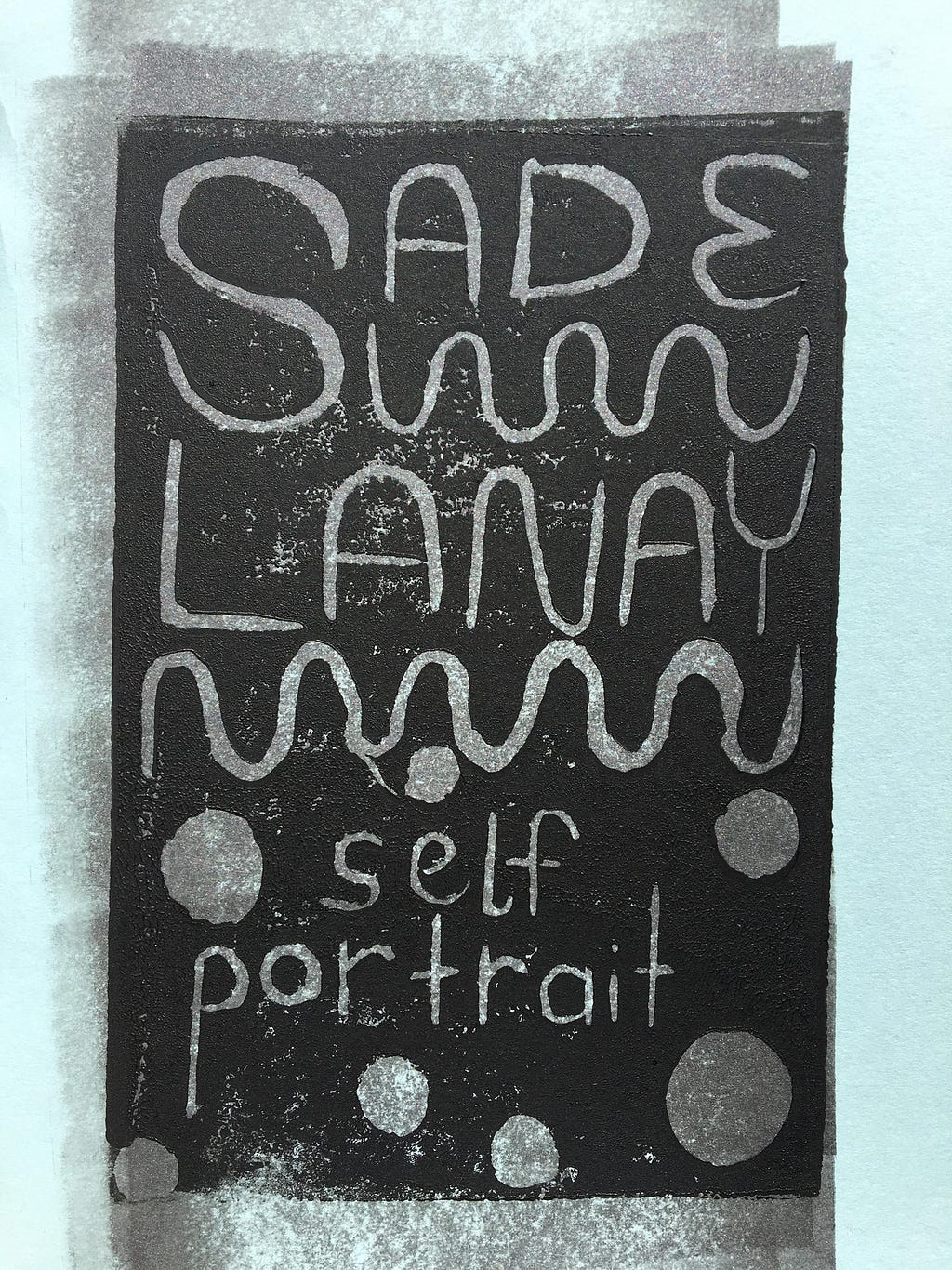
Clarity of mind, and consequently, of writing has long been deemed as something to strive for even if, more often than not, the consequences of this convention included linear narratives that obliterated nuanced stories — the kind of stories that are more likely to expose various systems for what they truly are. Also, it is precisely these linear, straight narratives that project the violent fiction of progress while continuing to disparage historically ignored populations. Featured in the spring 2018 issue of Black Warrior Review, Sade LaNay’s self portrait is a micro-universe of terrific renditions and schisms that refuse such linearity and conformity, both to literary norms and reader’s expectations. It is as much about assembling and disassembling one’s identity without any handbook of communal norms as it is about disrupting silence around sex, intimacy, and desire while finding joy in the transient modes of the queer self (illusions not only included, but even welcomed).
i love you circumstantially, circumventually,
circumfreely. the way you minister to Monday,
coaxing song from that rusty papal throat.
you are a monster of my own mythology.
In LaNay’s work, the queer black body is interested in interrogating how normatives are built and accepted as normative in the first place. By paying attention to how it can actually exist beyond or even without such fixed categories, this body destabilizes boundaries and occupies new spaces of meaning as it gets to be shared across and between other subjects, becoming something that defies the common sense only to reveal other sides and truths of the same story: “i do not need you i only like the impossibility of you.” Theirs is a self portrait where things such as ink and insecurity, curiosity and acrylic, feathers and calamity, cruelty and paint spray, glitter and eschatology, watercolor and endearment, oil pastel and impatience not only complement each other, but work together to deliver an entropy of moods and raw emotions that resist easy understanding and categorization and allow for the open exploration of one’s queerness with complete integrity.
you’re a slave to taxonomic fervor. you’re too smart for your own good. you’re basic, bitch. you’re fat, slut. you’re queer, cunt. i feel for the rolling vein in your left arm, then the radius nestled in the flesh. you’re my sugar sphinx. i put my hands on your hips. you write a poem with your clit. your name is a steeple. there’s no cure for you. your first orgasm is a tar pit. your sixth is Чудовищная водоворот. (…) i want to run away with you. i want to take you away from all this. and you’re the ocean. i can’t take you anywhere.
Poetry might become the equivalent of a daily routine but it’s a pattern that runs the risk of being interrupted (“you cannot poem no more.”) Once such interference occurs, what’s left instead resembles an untamed viscerality that refuses to be shamed and chooses to move at its own pace, alert but also contagious in its radical potential.The physics and memories of the queer black body get to be rewritten as poetry, as strategy for continuous self-invention that has no patience with binary norms but also as something that can only be witnessed/read as personal mythology without explanatory notes. Even if LaNay chooses to become open and vulnerable first, their self portrait loses none of its subtle strength — it just gnaws the world only to spit it right back at you in messy, angry bits.
I am memorizing the composition of you. Left iris around an undialeted pupil reminds me of a starburstscarred tree ring. How black coffee is not really black. The translucence of apache tears. When you stand in the harsh scrutiny of the make up mirror. you don’t have to be a hairless Normcore twat. you are already a highly invisible target. your heart has somatic nerves. you bleed lunarly. Under the influence you rise to the surface of my twowayglassskin. you become my last will and testament. Everyone else is a witness.
Sade LaNay (fka Murphy) is a poet and artist from Houston, TX living in Indiana. They is the author of Dream Machine (co-im-press, 2014) and has poems featured in the Electric Gurlesque and Bettering American Poetry anthologies. Sade also has two books forthcoming, Haarte (Downstate Legacies, 2018) and I Love You and I’m Not Dead (Argos Books, 2019).
Dissonance(s): Sade LaNay’s self portrait was originally published in Anomaly on Medium, where people are continuing the conversation by highlighting and responding to this story.
